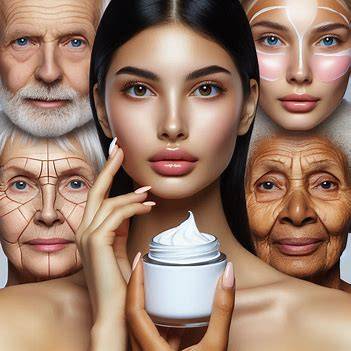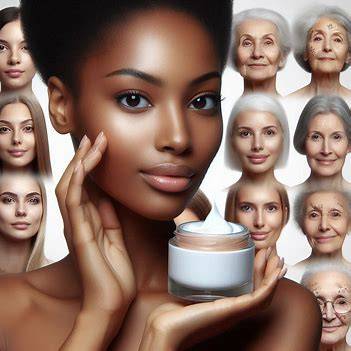-
 DIY: Video master classes
DIY: Video master classes
-
 Aromatherapy
Aromatherapy
-
 Felting master classes
Felting master classes
-
 Eating at home
Eating at home
-
 DIY cosmetics for children
DIY cosmetics for children
-
 Cooking recipes
Cooking recipes
-
 Detergents, cleaning products with your own hands
Detergents, cleaning products with your own hands
-
 Soap making as a business
Soap making as a business
-
 Natural cosmetics. Raw materials for cosmetics and soap.
Natural cosmetics. Raw materials for cosmetics and soap.
-
 Natural oils in cosmetics
Natural oils in cosmetics
-
 News
News
-
 Recipes for balms and conditioners
Recipes for balms and conditioners
-
 Bath Bomb Recipes
Bath Bomb Recipes
-
 Cream recipes. Cream making.
Cream recipes. Cream making.
-
 Lotion recipes. Gel recipes.
Lotion recipes. Gel recipes.
-
 Mask recipes
Mask recipes
-
 Soap recipes. Base soap. Soap from scratch.
Soap recipes. Base soap. Soap from scratch.
-
 Recipes for all occasions
Recipes for all occasions
-
 Natural shampoo recipes
Natural shampoo recipes
-
 Healthy Nutrition Recipes
Healthy Nutrition Recipes
-
 Scrub recipes. Massage tiles. Ubtan
Scrub recipes. Massage tiles. Ubtan
-
 DIY candles
DIY candles
-
 Reference materials, questions, tips
Reference materials, questions, tips
-
 Startup - soap production
Startup - soap production
-
 Hair care. Tips, recipes
Hair care. Tips, recipes
-
 Facial skin care. Cleansers.
Facial skin care. Cleansers.
-
 Body care. Tips, recipes
Body care. Tips, recipes
-
 Photo Reviews
Photo Reviews
-
 Chocolate Handmade
Chocolate Handmade
Active cream for aging skin: recipes and tips from Soap Opt
 Aging is a natural process, but that doesn't mean we can't gracefully embrace it with radiant, youthful-looking skin. While there's a plethora of anti-aging products on the market, many individuals prefer the natural and customizable approach of homemade skincare. Today, we'll delve into the world of active creams, providing you with effective recipes and expert tips from Mylo Opt.
Aging is a natural process, but that doesn't mean we can't gracefully embrace it with radiant, youthful-looking skin. While there's a plethora of anti-aging products on the market, many individuals prefer the natural and customizable approach of homemade skincare. Today, we'll delve into the world of active creams, providing you with effective recipes and expert tips from Mylo Opt.
Understanding the Importance of Active Ingredients
Before we dive into recipes, let's understand the power of active ingredients. These are the components that truly deliver results. Key ingredients to combat aging include:
- Hyaluronic acid: Hydrates and plumps the skin.
- Retinol: Stimulates collagen production, reducing fine lines and wrinkles.
- Vitamin C: Brightens the complexion, protects against free radicals, and boosts collagen synthesis.
- Niacinamide: Evens skin tone, improves texture, and strengthens the skin barrier.
- Peptides: Stimulate collagen and elastin production.
DIY Active Cream Recipes
Note: Always patch test new ingredients before applying them to your entire face. If you have sensitive skin or underlying skin conditions, consult a dermatologist.
Hydrating Hyaluronic Acid Cream
-
Ingredients:
- Hyaluronic acid powder
- Aloe vera gel
- Vegetable glycerin
- Emulsifying wax
- Preservative (optional)
-
Instructions:
- Combine hyaluronic acid powder with a small amount of water to activate.
- Mix aloe vera gel, vegetable glycerin, and emulsifying wax in a water bath until melted.
- Gradually add the activated hyaluronic acid mixture to the melted phase, stirring continuously.
- Allow the cream to cool completely before adding a preservative (optional).
 Revitalizing Retinol Cream
Revitalizing Retinol Cream
-
Note: Retinol can be irritating, so start with a low concentration and gradually increase it.
-
Ingredients:
- Retinol (consult a formulator for appropriate concentration)
- Emulsifying wax
- Aloe vera gel
- Vitamin E oil
- Preservative (optional)
-
Instructions:
- Combine emulsifying wax and aloe vera gel in a water bath until melted.
- Add retinol and vitamin E oil to the cooled mixture.
- Stir until the cream is smooth and consistent.
- Add a preservative (optional) before storing in a dark glass jar.
Brightening Vitamin C Cream
-
Ingredients:
- Ascorbic acid powder (L-ascorbic acid)
- Emulsifying wax
- Aloe vera gel
- Ferulic acid (optional)
- Preservative (optional)
-
Instructions:
- Combine emulsifying wax and aloe vera gel in a water bath until melted.
- Allow the mixture to cool slightly before adding ascorbic acid powder and ferulic acid (if using).
- Stir until the ingredients are fully incorporated.
- Add a preservative (optional) and store in a dark glass jar.
Tips for Effective Skincare
- Consistency is key: Use your active cream daily for optimal results.
- Sun protection: Always apply sunscreen to protect your skin from harmful UV rays.
- Gentle cleansing: Avoid harsh cleansers that can strip your skin's natural oils.
- Hydration: Drink plenty of water to keep your skin hydrated from within.
- Healthy lifestyle: A balanced diet, regular exercise, and adequate sleep contribute to overall skin health.
Remember, while DIY creams can be rewarding, it's essential to prioritize safety. If you're unsure about any aspect of creating your own skincare products, consult a qualified formulator or dermatologist.
";s:4:"TYPE";s:4:"HTML";}Mylo Opt Cosmetics Blog – Your Reliable Guide to Beauty and Care
Welcome to the Mylo Opt cosmetics blog! Here, you will find valuable advice, interesting recipes, and professional recommendations for creating soap, cosmetics, and candles with your own hands. Our blog is designed for anyone passionate about natural cosmetics, looking for new ideas, and wanting to learn more about producing high-quality skincare and haircare products. We share tested recipes, useful tips, and the latest news from the world of cosmetics.
Why Choose the Mylo Opt Cosmetics Blog?
Mylo Opt is not just an online store; it is a community of people passionate about creating natural cosmetics. Here are a few reasons why our blog will be useful to you:
- Experience and Expertise: Our authors are experienced cosmetologists, soap makers, and aromatherapy specialists. We share reliable and tested recipes that have undergone thorough testing and received positive feedback.
- Credibility and Authority: We ensure that all information in our blog is up-to-date and reliable. We reference scientific research and verified sources so that you can trust the quality of the information provided.
- Reader-Focused: Our content is tailored to you – our readers. We strive to answer your questions, solve your problems, and inspire new achievements in the world of natural cosmetics.
Popular Products from the Mylo Opt Online Store
Before we move on to recipes and tips, let us introduce you to the most popular products from our online store, which will help you create high-quality and natural cosmetics:
- Soap Bases: High-quality soap bases allow you to create beautiful and beneficial handmade soaps. We offer glycerin bases, bases with added oils and extracts, as well as transparent and white bases.
- Fragrance Oils and Fragrances: Give your products a unique scent with our fragrance oils and fragrances. We offer a wide range of scents – from fresh and floral to spicy and woody.
- Essential Oils: Essential oils are natural components that not only add fragrance to products but also offer beneficial properties for the skin and hair. Our range includes lavender, mint, eucalyptus, lemon, and many other oils.
- Active Ingredients: Vitamins, antioxidants, hyaluronic acid, and other active ingredients help improve the properties of your cosmetics. We offer only tested and high-quality components.
- Pigments and Dyes: Give your products bright and lasting colors with our pigments and dyes. They are safe for the skin and suitable for use in soap, cosmetics, and candles.
- Emulsifiers and Thickeners: To create creams and lotions, you will need emulsifiers and thickeners. We offer quality ingredients that help you achieve the desired consistency and stability of the product.
- Soap and Candle Molds: Create unique items with our soap and candle molds. Our range includes molds of various sizes and designs.
- Everything for Candles: Wax, wicks, fragrances, and dyes for candles – we have everything you need to create beautiful and fragrant candles.
Recipes and Tips for Making Handmade Soap
Cold Process Soap for Beginners
Making cold process soap is an exciting process that allows you to control all the ingredients and create unique recipes. Here is one simple cold process soap recipe for beginners:
Ingredients:
- 500 g olive oil
- 300 g coconut oil
- 200 g palm oil
- 150 g castor oil
- 120 g lye (sodium hydroxide)
- 300 ml distilled water
- Essential oils (lavender, mint, eucalyptus)
- Pigments or natural dyes (optional)
Process:
- Prepare all ingredients and tools. Always use protective gloves and goggles, as lye can be dangerous.
- Weigh the lye and water. Slowly add the lye to the water, stirring until it fully dissolves. Allow the mixture to cool to 40-45°C.
- Weigh the oils and melt them in a water bath. When the oils and lye solution reach the same temperature (about 40-45°C), slowly pour the lye into the oils, stirring constantly.
- Use an immersion blender to mix until trace (when the mixture thickens and leaves a trail when stirred).
- Add essential oils and pigments if desired. Mix thoroughly.
- Pour the mixture into a prepared mold and cover with a towel. Let the soap harden for 24-48 hours.
- Remove the soap from the mold and cut it into bars. Allow the soap to cure for 4-6 weeks before use.
Homemade Cosmetics Recipes
DIY Moisturizing Cream
Creating a moisturizing cream at home allows you to control the ingredients and adapt the recipe to your needs. Here is a simple recipe for a moisturizing cream:
Ingredients:
- 50 ml rose water
- 50 ml distilled water
- 10 g emulsifier (e.g., Olivem 1000)
- 10 ml jojoba oil
- 5 ml avocado oil
- 5 drops lavender essential oil
- 2 drops tea tree essential oil
Process:
- Weigh all the ingredients.
- In a water bath, melt the emulsifier with the oils until smooth.
- Separately, heat the water phase (rose water and distilled water) to the same temperature as the oil phase.
- Slowly pour the water phase into the oil phase, stirring constantly.
- Use an immersion blender to emulsify until you achieve a creamy consistency.
- Add essential oils and mix thoroughly.
- Pour the cream into a sterilized jar and allow it to cool.
DIY Candle Recipes
Aromatic Soy Candle
Creating aromatic candles is a creative process that allows you to experiment with scents and designs. Here is a simple recipe for a soy candle:
Ingredients:
- 200 g soy wax
- 20 ml fragrance oil (e.g., vanilla or lavender)
- Wick for candles
- Dyes (optional)
- Glass or metal candle mold
Process:
- Melt the soy wax in a water bath until liquid.
- Add the fragrance oil and dyes if desired. Mix thoroughly.
- Secure the wick in the center of the candle mold.
- Slowly pour the melted wax into the mold, holding the wick.
- Allow the candle to fully harden (about 24 hours).
- Trim the wick to the desired length and enjoy your aromatic candle.
Tips for Beginners in Cream Making
- Learn the Basics: Before starting to create creams, it is important to learn the basic principles and ingredients used in cream making.
- Experiment with Formulas: Do not be afraid to experiment with different ingredients and proportions to find the perfect formula for your skin.
- Use Quality Ingredients: The effectiveness and safety of your product depend on the quality of the ingredients. Always choose tested and natural components.
- Maintain Hygiene: It is important to maintain cleanliness and sterility when creating cosmetics to avoid contamination and spoilage of the product.
- Start with Simple Recipes: For beginners, it is best to start with simple recipes to master the basic techniques and principles of cream making.
Conclusion
Our Mylo Opt cosmetics blog is your reliable source of information and inspiration in the world of natural cosmetics. We share useful tips, tested recipes, and the latest news to help you create quality and effective products for skin, hair, and home care. Subscribe to our blog, follow the updates, and discover new opportunities in the world of natural cosmetics with Mylo Opt!





